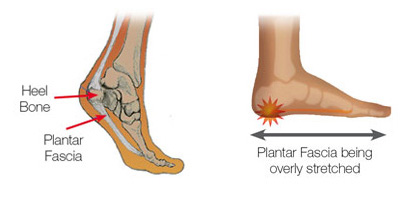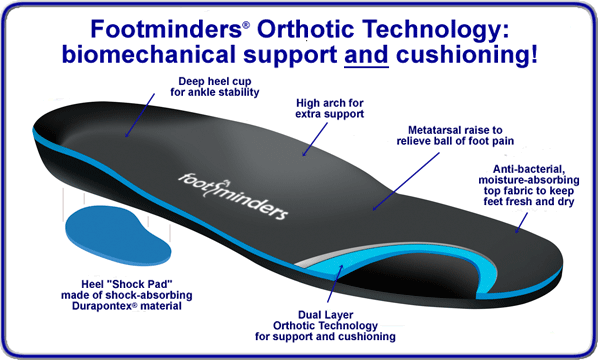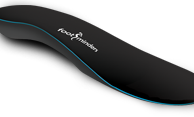Plantar Fasciitis: Symptoms and Treatment
Plantar Fasciitis is a painful inflammatory condition causing heel pain and in some people, heel spurs. It can also result in arch pain.
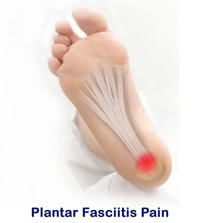 Plantar Fasciitis Symptoms
Plantar Fasciitis Symptoms
Among the symptoms for Plantar Fasciitis is pain usually felt on the underside of the heel, often most intense with the first steps after getting out of bed in the morning. It is commonly associated with long periods of weight bearing or sudden changes in weight bearing or activity.
Plantar Fasciitis also called “policeman’s heel” is presented by a sharp stabbing pain at the bottom or front of the heel bone. In most cases, heel pain is more severe following periods of inactivity when getting up and then subsides, turning into a dull ache.
What Causes Plantar Fasciitis?
Plantar Fasciitis is caused by abnormal pronation of the foot. Contributing factors are obesity, weight gain, jobs that require a lot of walking or standing on hard surfaces, badly worn shoes with little support, and also inactivity.
As a result of over-pronation, with every step the Plantar Fascia (band of tissue under the foot) is being stretched, resulting in inflammation, irritation and pain at the attachment of the fascia into the heel bone. In some cases the pain is felt under the foot, in the arch.
Continuous pulling of the fascia at the heel bone, eventually may lead to the development of bony growth on the heel. This is called a heel spur.
When you’re at rest, such as while sleeping, the Plantar Fascia tightens and shortens. When body weight is rapidly applied to the foot, the Fascia must stretch and quickly lengthen, causing micro-tears in the Fascia. As a result, the foot pain is more severe with your first steps in the morning, or after sitting for a long period.
Plantar Fasciitis is more likely to happen if:
- you suffer from over-pronation (flattening of the arch)
– you stand or walk on hard surfaces, for long periods
– you are overweight or pregnant
– you have tight calf muscles
Treatment and relief from Plantar Fasciitis
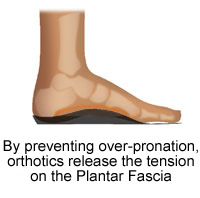 Plantar Fasciitis, heel pain, heel spurs and arch pain can be treated with simple, non-surgical methods. The most common pain relief solutions are:
Plantar Fasciitis, heel pain, heel spurs and arch pain can be treated with simple, non-surgical methods. The most common pain relief solutions are:
• Rest, avoid prolonged activity, such as walking, running & sports
• Ice , apply ice for only 5 mins, allowing the foot inflammation to cool down
• Weight loss
• Stretching exercises: Do these stretching exercises for plantar fasciitis on a daily basis.
• A low-cost orthotic shoe insert
The most effective solution to Plantar Fasciitis is to treat the cause of the problem by correcting abnormal foot mechanics with orthotic insoles.
Developed by podiatrists, Footminders orthotics control over-pronation and provide full arch support. They help release the tension on the Plantar Fascia, thereby treating thecause of Plantar Fasciitis. Additionally, a soft shock-absorbing heel pad helps reduce the impact on the painful heel, providing added relief and walking comfort.
Footminders biomechanical insoles were developed by a group of podiatrists (foot specialists) and have helped many thousands of heel pain sufferers across Europe and Australia, and are now being offered in the United States. To bolster our claim that our standard orthotics are more effective than those very expensive custom-made orthotic insoles, we provide a transccrip of a recent Heel Pain study by the American Orthopaedic Foot and Ankle Society (AOFAS). This study found that by wearing standard off-the-shelf orthotics combined with daily stretching and strengthening exercises, 95% of patients experienced substantial, lasting relief from their heel pain symptoms.



 100% Secure
100% Secure